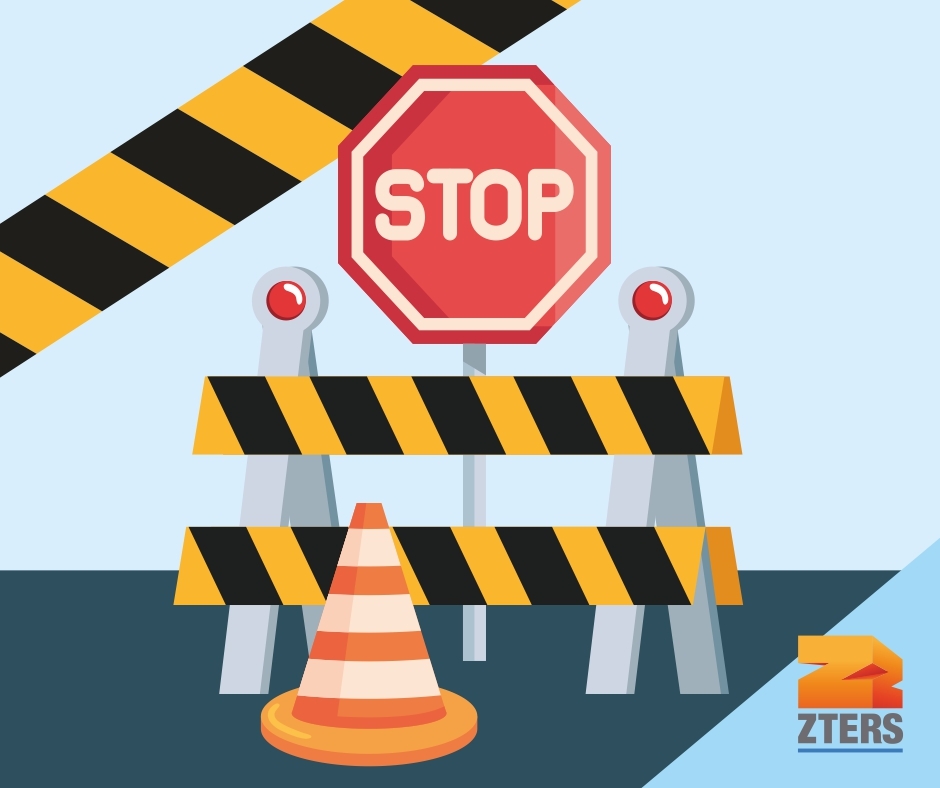Road construction zones can be hazardous for both workers and drivers if proper safety measures aren’t followed. In 2022, 891 people were killed and 37,701 people were injured in work zone crashes. Of those, 528 were in construction zones. Many of these incidents could be avoided with proper road construction safety.
Understanding the do’s and don’ts of road construction safety is not just important, it’s life-saving. Keep reading for key safety tips, best practices for workers and drivers, and why road construction safety is everyone’s responsibility.
What Is Road Construction Safety?
The phrase may bring some basic ideas to mind, but road construction safety encompasses more than just safe driving and traffic control fences (though these are crucial components). Road construction safety refers to the precautions and practices designed to prevent accidents and injuries in work zones.
This includes measures to protect road workers, drivers, pedestrians, and nearby property from harm. Proper signage, worker training, and public awareness campaigns all play a role in maintaining safe construction zones.
Common Road Construction Hazards
Road construction zones often involve heavy equipment, uneven terrain, and limited visibility, creating several potential risks. Common hazards include:
- High-speed traffic near work zones
- Distracted drivers
- Inadequate signage
- Equipment malfunction
- Nighttime construction with poor lighting
The Occupational Safety and Health Administration (OSHA) enforces hundreds of standards across industries to help ensure the safety of workers. In the construction sector, these OSHA construction standards include everything from barricade requirements to drinking water and porta potty regulations. An employer’s failure to comply can result in hefty fines and workplace closures.
Safety Tips for Drivers in Work Zones
It goes without saying that drivers play a crucial role in ensuring road construction safety. Behind the wheel of a multi-ton vehicle, we’re not only responsible for our own safety, but can also be held accountable for the safety of those around us.
Follow these tips to navigate work zones safely while driving:
- Slow Down: Obey posted speed limits in construction areas. Speeds are often reduced to protect workers and drivers alike.
- Stay Alert: Eliminate distractions like mobile phones or loud music when driving through work zones.
- Follow Signage: Pay close attention to detour signs, lane closures, and flaggers directing traffic.
- Maintain Distance: Leave extra space between your vehicle and construction equipment or workers.
- Prepare for Delays: Plan ahead to avoid rushing through construction zones, which can increase risks.
Even if you’re in a rush to reach your destination, it’s not worth driving recklessly and risking injury (or worse) to yourself or workers. Slow down, stay alert, and pay attention to signage.
Safety Tips for Road Construction Workers
For road workers, safety begins with proper training and adherence to protocols. You most likely received some sort of training or brief intended to enhance your safety while on site. As a reminder, essential road construction safety includes:
- Wear High-Visibility Clothing: Use reflective vests and hard hats to remain visible to drivers and machinery operators.
- Secure Work Areas: Use barriers, cones, and signage to separate workers from traffic.
- Conduct Regular Equipment Inspections: Ensure machinery is in proper working condition to prevent malfunctions.
- Communicate Clearly: To enhance construction site management, use radios or hand signals to coordinate safely with team members.
- Stay Aware of Surroundings: Be mindful of moving equipment, traffic, and changing weather conditions.
Check out our blog posts on summer construction safety and winter construction safety for weather-related tips.
Why Are Work Zones Dangerous for Drivers?
According to the Federal Motor Carrier Safety Administration (FMCSA), one of the leading causes of work zone crashes is driver inattention. Work zones often feature sudden lane shifts, unfamiliar traffic patterns, and reduced speed limits, making them inherently more dangerous. Distracted or impatient drivers increase the likelihood of accidents.
How Technology Is Improving Road Construction Safety
As is the case in many industries, technology in construction is advancing in many ways and improving safety measures in work zones is one. Some innovations include:
- Automated Flagger Assistance Devices (AFADs): These devices reduce risks to flaggers by automating traffic control.
- Smart Work Zone Systems: Use sensors and digital messaging boards to provide real-time updates to drivers.
- Personal Protective Equipment (PPE) Enhancements: Modern PPE includes lightweight, more reflective materials for worker safety. Employers can also work to ensure that PPE is comfortable for employees, which will increase the likelihood of consistent wear.
Road Construction Safety Laws and Penalties
Most states enforce strict laws in work zones, including doubled fines for speeding or distracted driving. Here are several examples to give you a sense of how many different laws and penalties exist across the US:
1. Double Fines for Speeding in Work Zones
Many states impose doubled fines for speeding in active work zones. These laws typically apply even if no workers are visibly present but signs indicate an active zone. In California, fines are doubled for speeding in work zones, with penalties ranging from $360 to over $1,000 depending on the speed.
2. Distracted Driving Penalties
Using your phone/other mobile device or engaging in other distractions while driving in a work zone is illegal in many states. In Illinois, a distracted driving offense in a work zone can result in a $1,000 fine and a 90-day license suspension for repeat offenders.
3. Move Over Laws
Drivers are required to change lanes or slow down when approaching stationary vehicles with flashing lights, including construction vehicles. In Texas, failure to comply with the Move Over/Slow Down law can result in a fine of up to $2,000 and even jail time if an accident occurs.
4. Work Zone Camera Enforcement
Automated cameras monitor traffic in work zones, issuing citations to speeding drivers. In Maryland, automated speed enforcement in work zones can result in fines of $40 per violation, even for minor infractions.
5. Mandatory Headlights in Work Zones
Some states require drivers to turn on headlights while passing through active work zones for better visibility. In Missouri, drivers who fail to comply with this law may face fines of up to $25, plus court fees.
6. Reckless Driving and Endangerment Penalties
Driving recklessly in a work zone, especially endangering workers, carries severe penalties. In Florida, reckless driving in a work zone can result in fines of up to $5,000 and up to 5 years in prison if injuries occur.
7. Enhanced Penalties for Injuries or Fatalities
If a driver’s negligence results in a worker’s injury or death, additional penalties are applied. In New York, a driver causing injury to a highway worker faces fines up to $7,500, license suspension, and even criminal charges.
9. DUI Penalties in Work Zones
Driving under the influence in a work zone often carries heightened penalties compared to non-work zone DUIs. In Colorado, DUI penalties are compounded in active work zones, leading to harsher fines, license suspension, and potential jail time.
Staying Safe in Work Zones Is a Shared Responsibility!
Road construction safety depends on both workers and drivers taking proactive measures to reduce risks. When we know and obey the above tips, we can minimize accidents and save lives. If you need construction temporary fencing to help enhance safety and follow guidelines on your construction site, give us a call!

